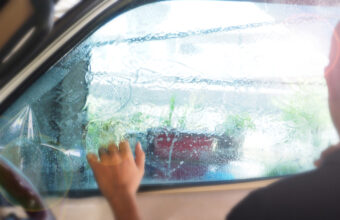After investing in window tinting for your vehicle or home, understanding the drying, or curing, process is crucial for ensuring the tint adheres properly and lasts. The drying time for window tint can vary based on several factors, including the type of tint, application method, and environmental conditions.
Here’s what you need to know about the window tint drying process and how to navigate it successfully…
Standard Drying Times
The typical drying time for window tint ranges from a few days to a month. Here’s a breakdown…
- Short-Term Drying – Initially, the adhesive begins to set within the first 24 to 48 hours after application. You might notice water bubbles or a hazy appearance during this period, which is normal.
- Complete Curing – The full curing process, where the tint fully adheres to the window and all moisture evaporates, can take anywhere from 3 days to 30 days, depending on various factors.
Factors Affecting Drying Time
Type of Tint and Adhesive
- Material Differences – The specific material of the tint film and the type of adhesive used can influence drying times. Some adhesives set faster than others, and thicker films may take longer to dry.
Application Method
- Professional vs. DIY – Professional installers might use techniques or tools that ensure a more uniform application and potentially quicker drying times compared to DIY kits.
Environmental Conditions
- Temperature and Humidity – Warmer, sunny weather can accelerate the drying process, while cooler or more humid conditions can extend it. Indoor conditions, such as the use of air conditioning or heaters, can also impact drying times for home window tints.
Tips for Optimal Curing
Avoid Disturbing the Tint
- Wait on Cleaning – Avoid cleaning the tinted windows or rolling down tinted car windows until the film has fully cured to prevent peeling or bubbling.
- Be Patient with Bubbles – Small bubbles or haziness should clear up as the film dries. If these imperfections persist beyond the expected drying time, consult with the installer.
Monitor Environmental Conditions
- Sun Exposure – If possible, park your vehicle in sunny areas to help warm the windows and speed up the drying process.
- Home Windows – For home window tints, maintaining a consistent indoor temperature can aid in even curing.
The window tint drying process requires patience and care to ensure the film sets properly for long-lasting performance. By understanding the factors that affect drying time and following best practices during the curing period, you can achieve a smooth, durable tint finish. If you have concerns about the drying process or notice issues after the expected curing time, reaching out to your professional installer can provide peace of mind and ensure your tint maintains its quality and effectiveness.






